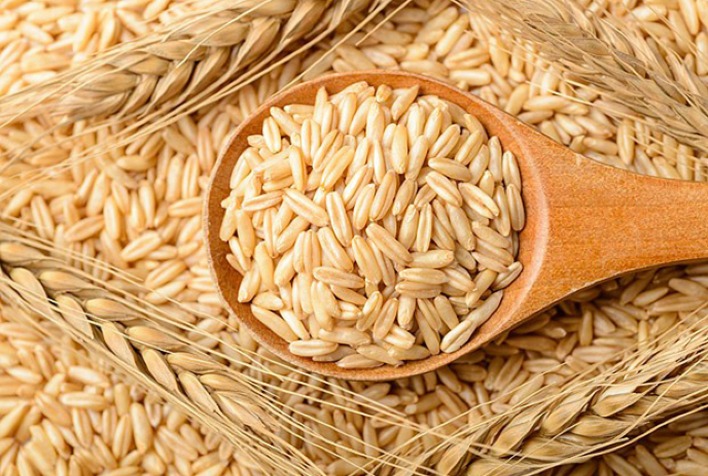Fungal toxins are widespread in European wheat – threatening human health and the economy

Wheat provides 19% of the calories and 21% of the protein consumed by humans globally. But a fungal disease called fusarium head blight (FHB), which can infect wheat crops and contaminate the grain with toxins, is on the rise.
These so-called mycotoxins – which include deoxynivalenol, commonly called “vomitoxin” – are a threat to human and livestock health and can cause vomiting, intestinal damage, weakened immune system, hormone disruption and cancer.
To protect consumers, the EU commission set legal limits on vomitoxin levels in wheat produced for food. Grain deemed too contaminated for human consumption is often downgraded to animal feed. But downgrading comes at a cost to farmers and the economy because animal feed has a lower monetary value than food.
Governments and agribusinesses routinely monitor mycotoxin levels in the food and animal feed supply chains. Yet the scale of FHB mycotoxin contamination in European wheat supplies is understudied and its economic impact had previously not been quantified.
With colleagues from the universities of Bath and Exeter, we analysed the largest available mycotoxin datasets and found that FHB mycotoxins are widespread in wheat produced for food and animal feed across Europe. We also found that the threat of mycotoxins – particularly in the south of Europe – is increasing over time.
Vomitoxin was present in every European country studied, and overall it was found in half of all wheat samples destined for food. In the UK, vomitoxin was found in 70% of the food wheat produced between 2010 and 2019.
Almost all (95%) of the vomitoxin contamination recorded in European wheat was within legal limits. This confirms that current legislation and the monitoring of FHB mycotoxin levels in food effectively safeguard European consumers against acute poisoning.
Yet the widespread presence of vomitoxin in our food is concerning. It is not yet known how constant, low-level dietary exposure to mycotoxins can affect human health in the long term. This is compounded by the fact that one-quarter of the wheat contaminated with vomitoxin also contained other FHB mycotoxins, raising concerns of synergism, where toxins interact with each other and cause greater harm than the sum of the individual toxins acting alone.
We also estimated the cost of vomitoxin to the European economy.
Vomitoxin was recorded in concentrations above legal limits in 5% of the wheat produced for food in Europe. Between 2010 and 2019, this was equivalent to 75 million tonnes of wheat. If all of this affected wheat was diverted to animal feed, we calculated that the loss in value for wheat producers would be €3 billion (£2.6 billion) over the period studied.
However, the total economic cost of the FHB disease in Europe is likely to be far higher. Our calculation does not include the reduction in wheat yields as a result of the disease, contamination with other harmful but less routinely tested mycotoxins, or the costs of applying fungicide to prevent the growth of the fungal pathogen.
FHB is a disease that fluctuates annually. But we found that mycotoxin levels increased in lower latitude countries between 2010 and 2019, with this particularly the case in the Mediterranean. The vomitoxin concentrations recorded during the 2018 and 2019 outbreak years, for example, were the highest across the period studied.
Our study did not investigate the causes of this increase. But it is likely that changes in farming practices, climate change, and the dwindling effectiveness of fungicides are all contributing factors.
Minimum tillage, where land is cultivated using methods other than ploughing to reduce soil disturbance, is an increasingly popular farming method. The method is beneficial for soil health but leaves crop debris behind and enables the FHB fungus to survive the winter. Maize, a crop highly susceptible to FHB, is also grown extensively across Europe. Combined, these farming practices increase the FHB pathogen load in the environment.
Climate change may also encourage the spread of FHB disease. Warmer and wetter weather coinciding with when wheat is in flower provides conditions ideal for the FHB fungus to infect and produce mycotoxins.
Resistance to azoles, a commonly used fungicide, has been increasingly reported in recent years. Naturally and through repeated exposure, fusarium fungal species are more resistant to these fungicides than other fungal pathogens.
FHB contamination is widespread across Europe, carrying a substantial cost. Understanding the FHB disease and its mycotoxins is therefore important. But monitoring of FHB outbreaks must be improved to allow researchers to predict which environments are most at risk of mycotoxin-causing fungal diseases in the future.
Methods of containing the disease must also be further developed. These include new fungicides or future crop protection strategies that inhibit the development of mycotoxins. Climate change is leading to more crop disease outbreaks and our need for secure food supplies is increasing, the issue of mycotoxins is therefore only going to become more important.
Read also
Wheat in Southern Brazil Impacted by Dry Weather and Frosts
Oilseed Industry. Leaders and Strategies in the Times of a Great Change
Black Sea & Danube Region: Oilseed and Vegoil Markets Within Ongoing Transfor...
Serbia. The drought will cause extremely high losses for farmers this year
2023/24 Safrinha Corn in Brazil 91% Harvested
Write to us
Our manager will contact you soon



